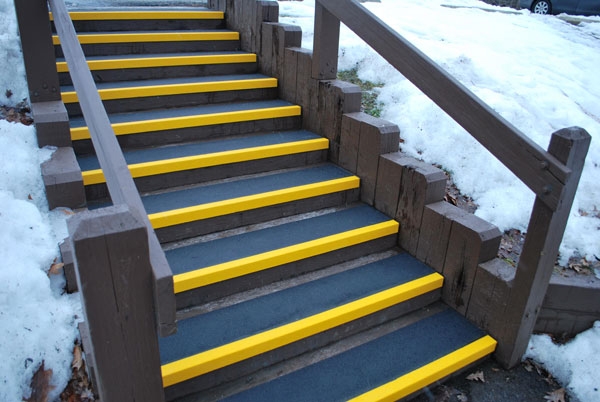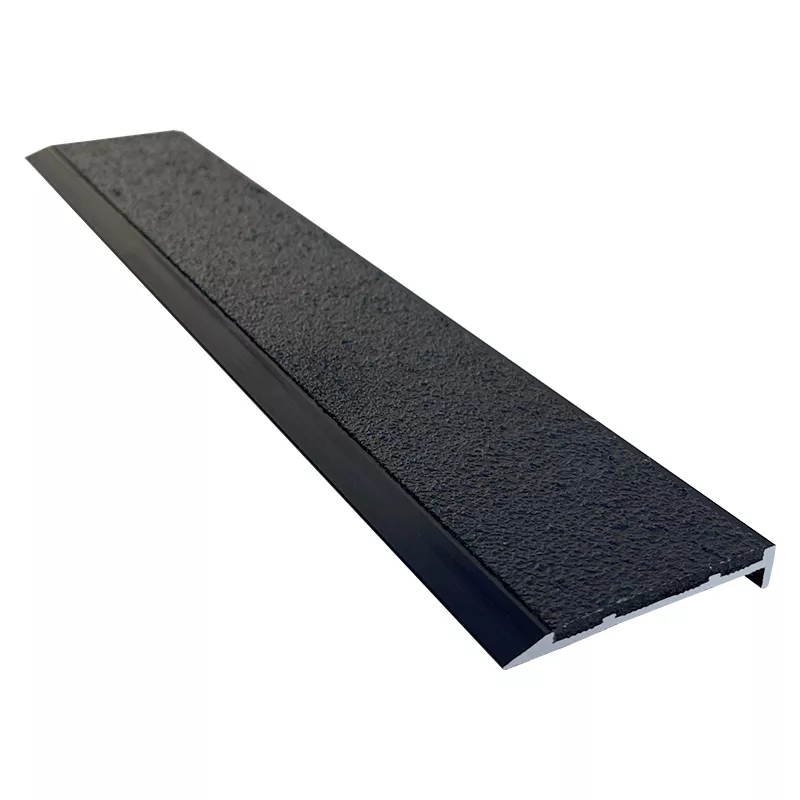We’re often asked to give recommendations on the best stair nosing inserts for a particular installation. With so many factors to consider, it can quickly become overwhelming. While color is one of the first considerations, there is so much more that goes into choosing the perfect stair nosing insert. Here are the main qualities you should consider to ensure you specify the best insert for your project.
Understanding Light Reflective Value (LRV)
One important quality to consider when choosing stair nosing inserts is the Light Reflective Value (LRV). LRV measures how much light a surface reflects compared to the light that falls on it. This is especially important for accommodating people with visual impairments. Even if some individuals cannot distinguish colors, they can usually see contrasts between light and dark areas. By measuring the contrast between two surfaces, LRVs make it easier for visually impaired individuals to navigate spaces, particularly on stairs.

LRVs are rated on a scale of 0 to 100. Dark, matte, and/or textured surfaces absorb more light and have a lower LRV. Light, glossy, and/or smooth surfaces reflect more light and have a higher LRV. For safety on stairs, it is recommended to ensure there is at least a 30-point difference in the LRVs of the stair nosing and the insert. This contrast helps to highlight the edge of each step, reducing the risk of trips and falls.
Evaluating Slip Resistance
Slip resistance is another critical factor to consider. All Gradus inserts are tested for slip resistance, surface roughness, and chemical and bacterial resistance. The independent test used to determine slip resistance is called the pendulum test. This test simulates the action of a foot moving across a surface to measure its slip resistance.
The rating for Pendulum Test Values (PTV) starts at 0, indicating a high slip potential, and goes up to 36+, which indicates a low slip potential. It is important to select inserts with high PTV ratings to ensure safety, especially in areas prone to wet or greasy conditions. All Gradus stair nosing inserts exceed the PTV of 36, ensuring they provide a secure grip in various environments.
If you have a specific profile in mind, you can refer to the Gradus catalog to see the PTV rating of each insert. This information helps in selecting the right insert for the specific conditions of your installation.
Considering the Environment
The environment where the stair nosing will be installed plays a major role in your decision. Different environments require different types of inserts to ensure durability and safety. For example, inserts suited for interior dry conditions may not perform well in wet or greasy environments.

When selecting an insert, make sure it is rated for the conditions it will be exposed to. For instance, in an outdoor setting where stairs are exposed to rain or other elements, you will need inserts designed for external conditions. On the other hand, for indoor areas that remain dry, you can choose inserts suited for those specific conditions.
Using the wrong type of insert for the environment can lead to premature wear and potential safety hazards. Ensure the profile and insert you choose can handle the demands of the specific environment to maintain safety and functionality.
Matching Inserts to Installation Environments
It is also crucial to match the inserts to the specific installation environments. This involves considering factors such as foot traffic, exposure to elements, and the type of flooring material used in the surrounding area.
For high-traffic areas, choose durable inserts that can withstand frequent use without significant wear. In environments exposed to chemicals or grease, select inserts that are resistant to these substances to maintain their integrity and slip resistance.
Additionally, consider the flooring material in the surrounding area. The insert should complement the flooring in terms of both functionality and aesthetics. For example, if the flooring is made of a slippery material like polished tile, you will need inserts with high slip resistance to prevent accidents.

Conclusion: Choosing the Best Option for Your Stair Nosing Inserts
Choosing the right stair nosing inserts involves considering various factors such as LRV, slip resistance, and environmental conditions. By understanding these elements, you can make an informed decision that enhances both the safety and appearance of your stairs.
For those with more questions about stair nosing inserts or other flooring accessory needs, contacting a knowledgeable supplier can provide further guidance. Ultimately, taking the time to select the appropriate inserts ensures a safer and more durable stair installation, protecting everyone who uses the stairs.
This revised article meets the SEO and EEAT requirements while maintaining clarity and simplicity appropriate for an American middle to high school reading level.

About The Author
Meet Kevin, a seasoned expert in the field of architectural safety and design with over 12 years of experience. As a leading authority on stair safety solutions, Kevin has dedicated their career to exploring and implementing innovative and effective stair nosing applications.

